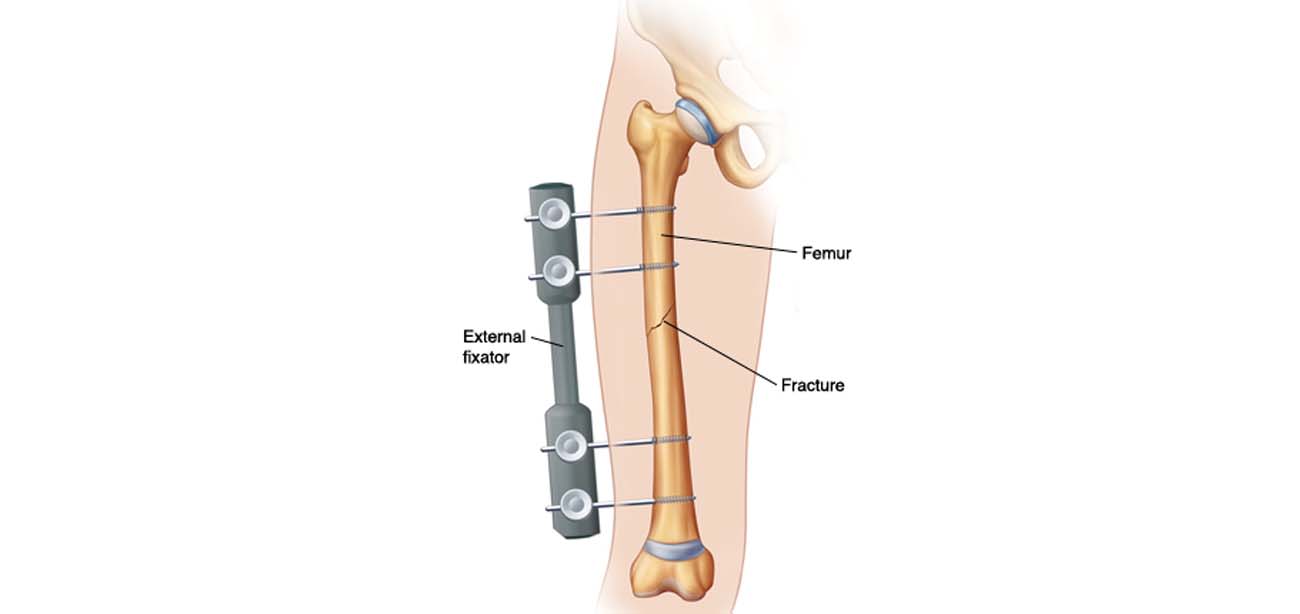
What is Fracture Fixation?
When a bone is broken (or fractured), the obvious goal is to mend the pieces so that the bone will be aligned with full integrity once again. While we usually refer to this procedure as “re-setting” the bone, the medically correct term used to describe this is a “reduction” for fracture fixation.
Types of Fracture Fixation
We are all probably most familiar with splints and casts to temporarily immobilize the broken bone and allow the body to heal itself. But did you know the medical term for casts and splints is termed “closed” fracture fixation? There are three basic types of external fixators: standard uniplanar fixator, ring fixator, hybrid fixator. These are all similar to each other in terms of appearance, appearing as metal structures outside the body surrounding the leg or arm protecting the fracture.
If the fracture is too complicated for “closed” means to be ultimately successful, an “open” fracture fixation surgery is recommended.
A common term for operative fracture stabilization is “open reduction internal fixation (ORIF).” This procedure requires surgical intervention and is a much more invasive approach to successfully stabilize the fracture, allowing for optimum healing. An “open” fracture fixation may include implants, which many include metal screws to nails that fit inside the central portion of the bone. These “implants” are designed to safely stay in the body indefinitely.
In the past decade, surgical procedures for “open” fracture fixation have become more and more minimally invasive to reduce the overall “trauma” to the area of injury, protecting the local skin and muscles to a much greater extent.

Dr. Atul Patil
MBBS MS (Ortho) DNB MNAMS
Consultant Orthopaedic
Spine & Joint Replacement Surgeon
View Full Profile Call For Appointment
Call For Appointment